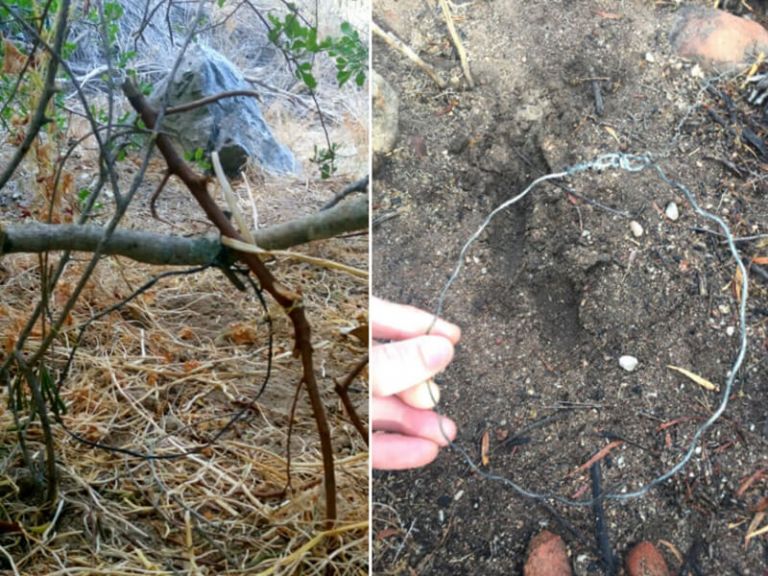On Monday 3 Jun 2019, The Cape Leopard Trust launched a Snare Patrol Project within our Boland Mountain Complex (BMC) research focus area. This project follows on from our research collaboration with the University of Stellenbosch (2017-2018) which investigated several human-related threats to leopard and their prey species, particularly hunting with illegal snares and the factors driving this behaviour.
We found that within the BMC, a wide range of animal species are affected by illegal wire snare poaching on private property. Small antelope such as common duiker, Cape grysbok, klipspringer and grey rhebuck as well as Cape porcupine are highly sought-after species with high off-take rates. These findings are significant because small antelope and porcupine form the primary prey base of leopard in the study area. Without a healthy prey base, leopard populations will likely decline. The unsustainable removal of these prey species is thus bound to have severe consequences. It is therefore crucial to undertake a programme of targeted conservation activities to decrease the pressures on leopards and their prey base.
To address this issue, we have appointed a dedicated Snare Patrol Officer who will conduct snare detection, removal and data collection patrols on private property adjacent to Protected Areas in the BMC. In parallel with these snare patrols, we are running education and outreach activities through community engagement. We are implementing this intervention programme in collaboration with the statutory conservation body, CapeNature, as well as the City of CT.
The dire need for our newly launched project is highlighted by the very sad news of a leopard carcass that was discovered in a snare on private property on the slopes of the Helderberg Mountain over the past weekend.
The leopard is the last of the big predators to still roam free in the Western Cape. It plays a vital role as apex predator and umbrella species for broader biodiversity conservation. Unfortunately, leopards are highly threatened and have been classified as Vulnerable by the IUCN. Globally, leopards have lost 75% of their historical distribution range. Only a fraction (20%) of South Africa’s area is considered suitable leopard habitat, of which a mere 32% falls within formally protected areas. The importance of leopard habitat harboured on private property (over 60%) should not be overlooked. Human behaviour and activities on private land, especially along the borders of protected areas, can have a profound effect on leopard numbers and population structure.
Our research and conservation activities in the Boland area are made possible through financial support by the Hans Hoheisen Charitable Trust (manage by Nedbank Private Wealth) and Wilderness Foundation Africa (as part of the Forever Wild Leopard Conservation Initiative), and a vehicle sponsorship by Avis South Africa.

















